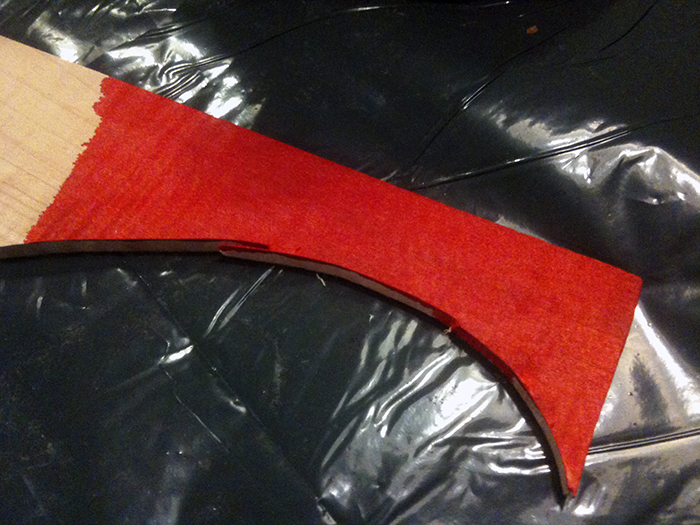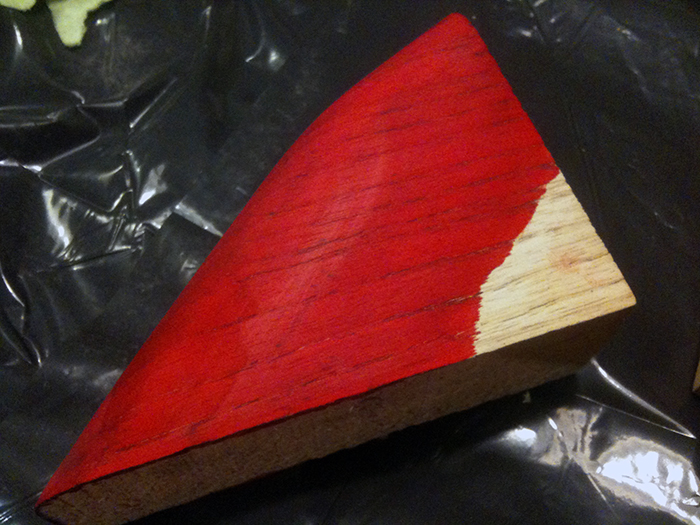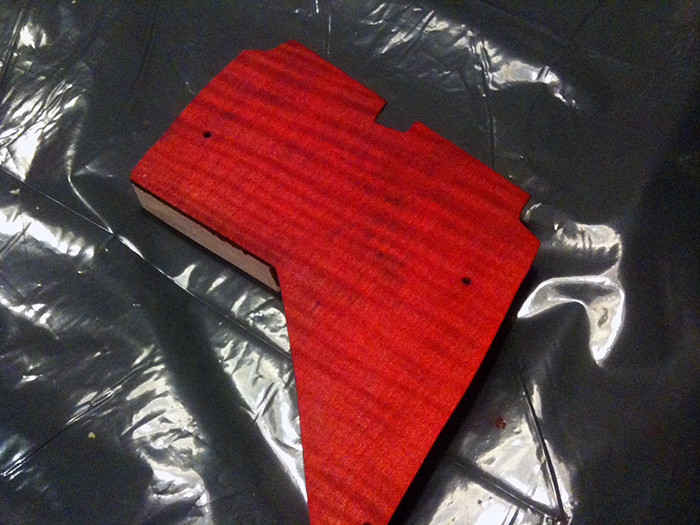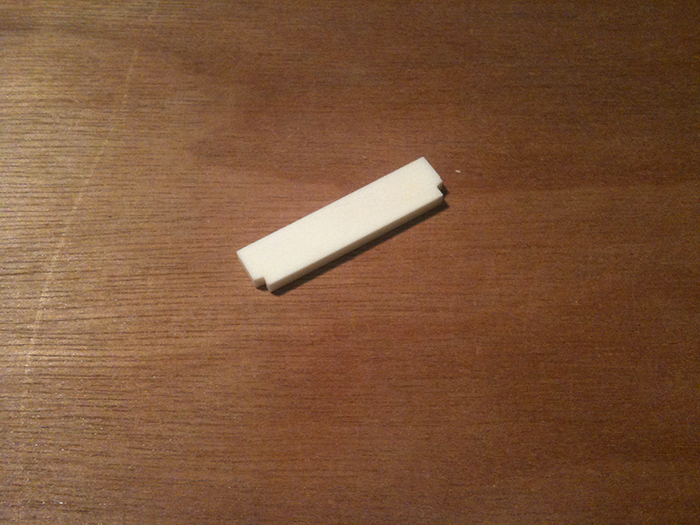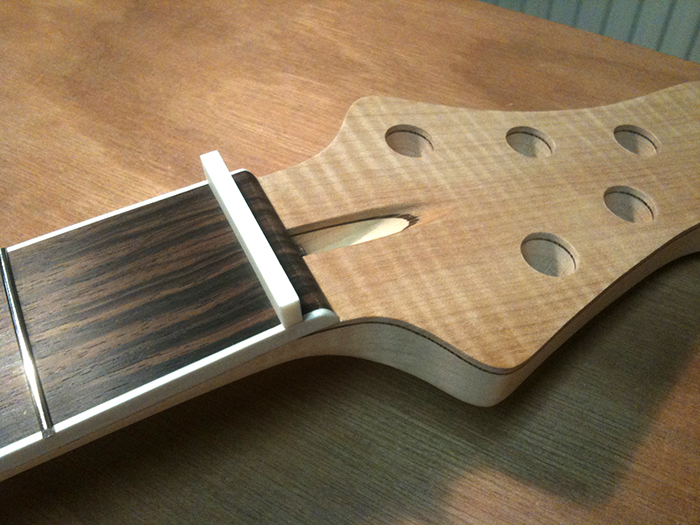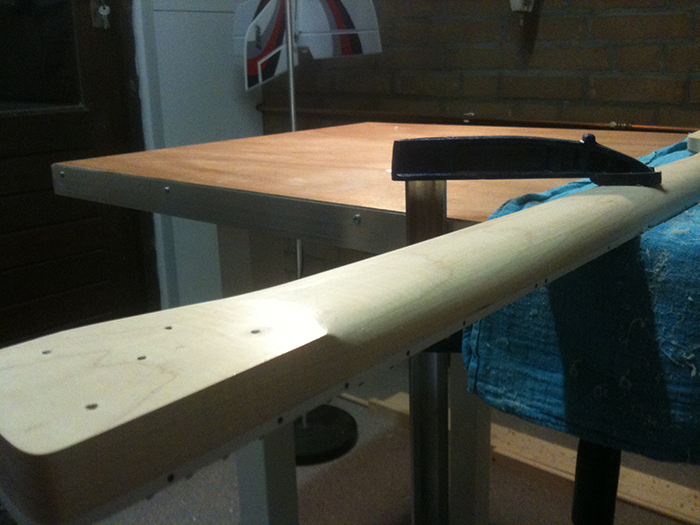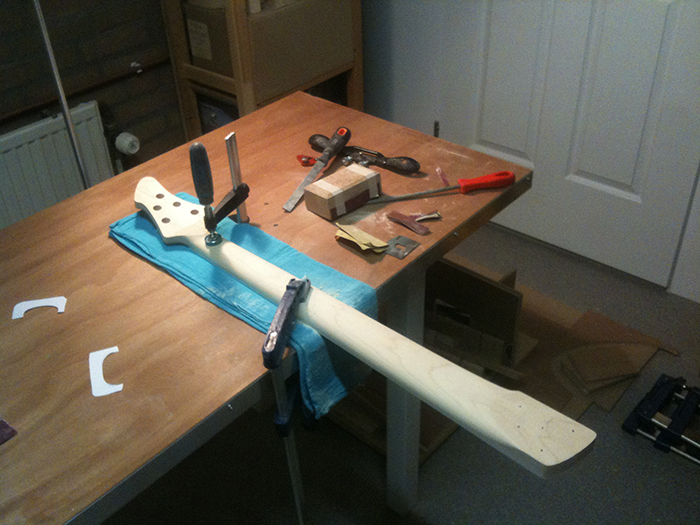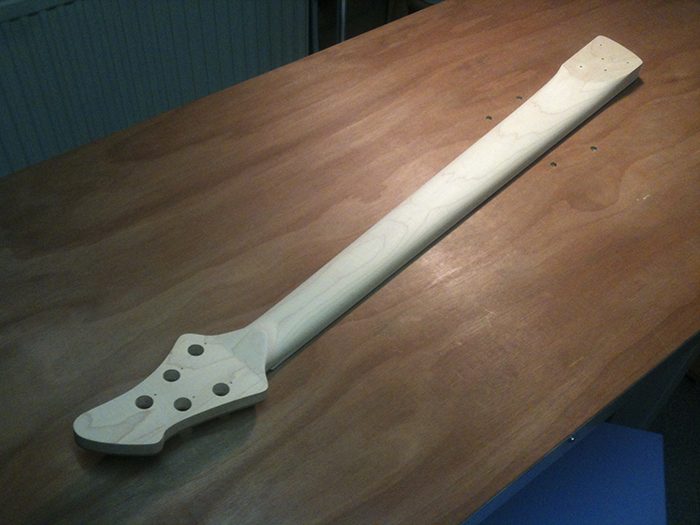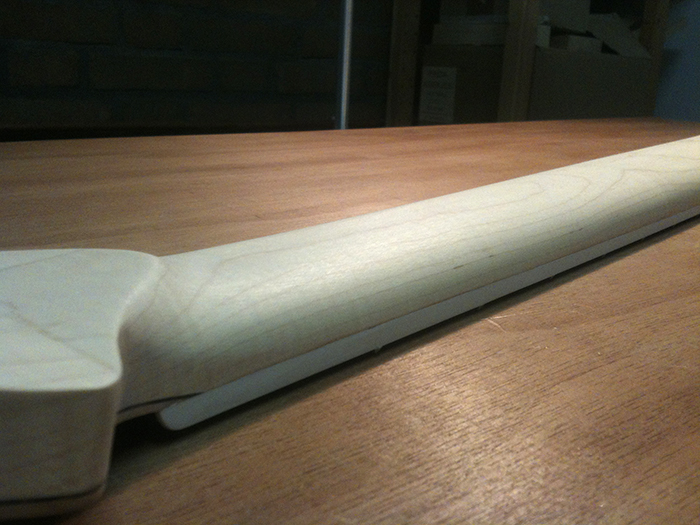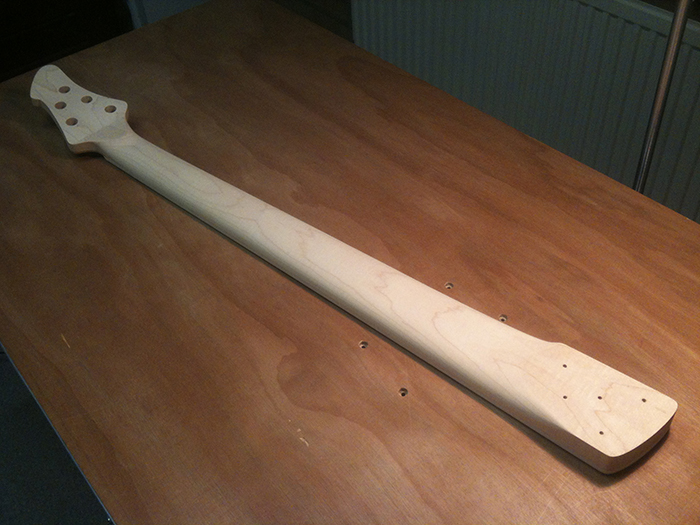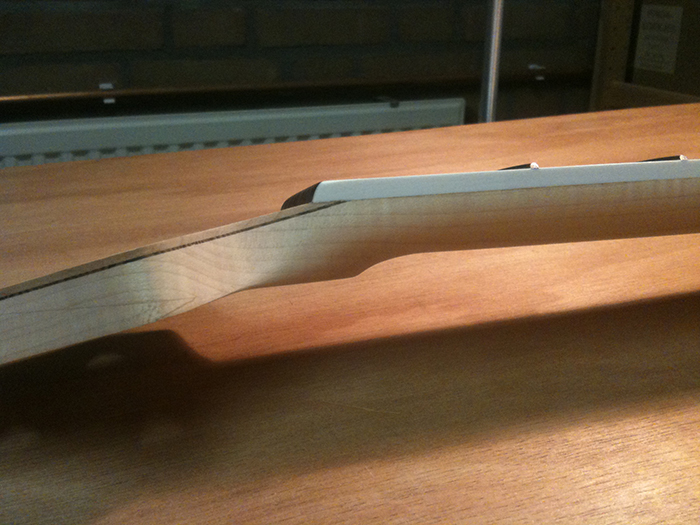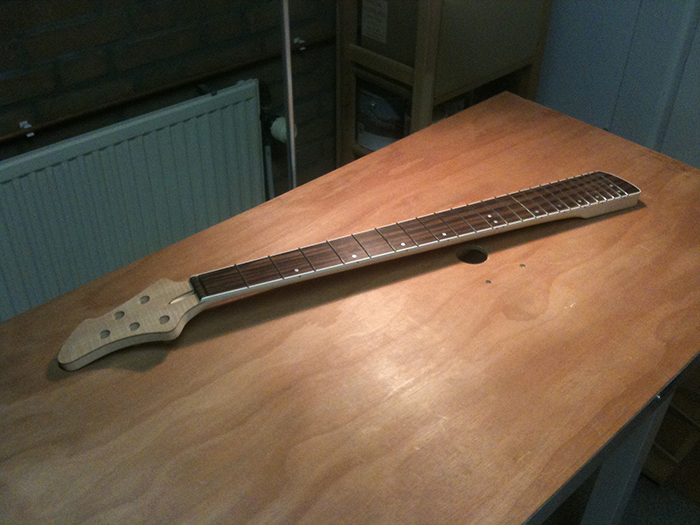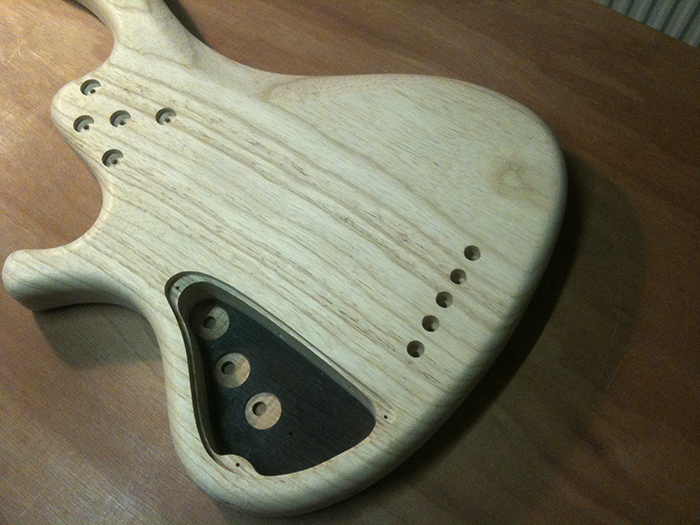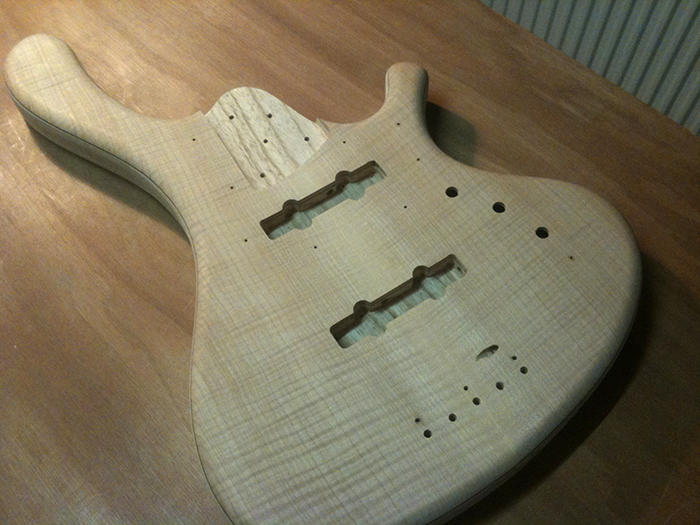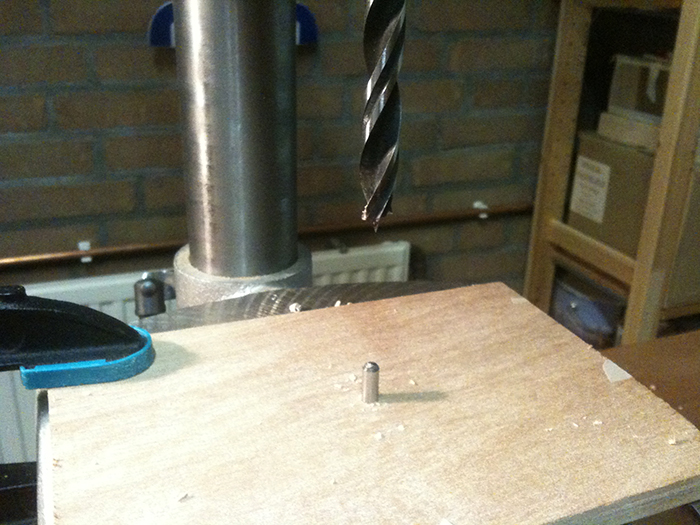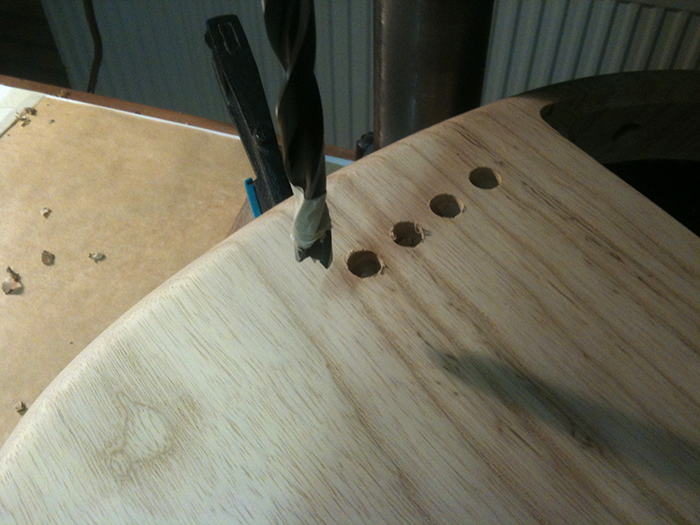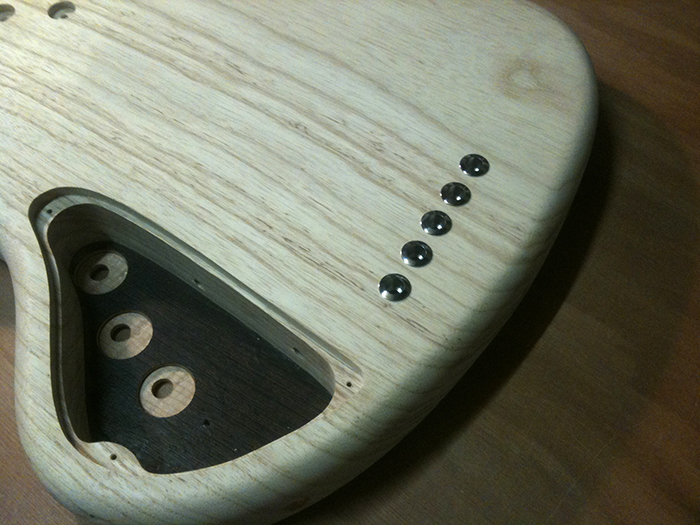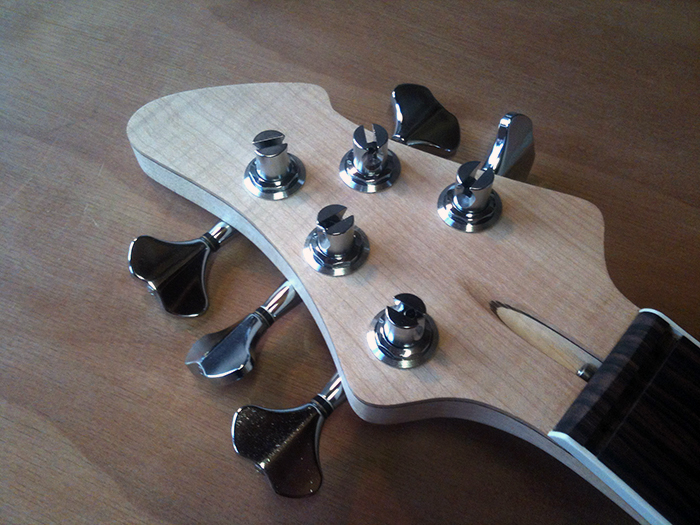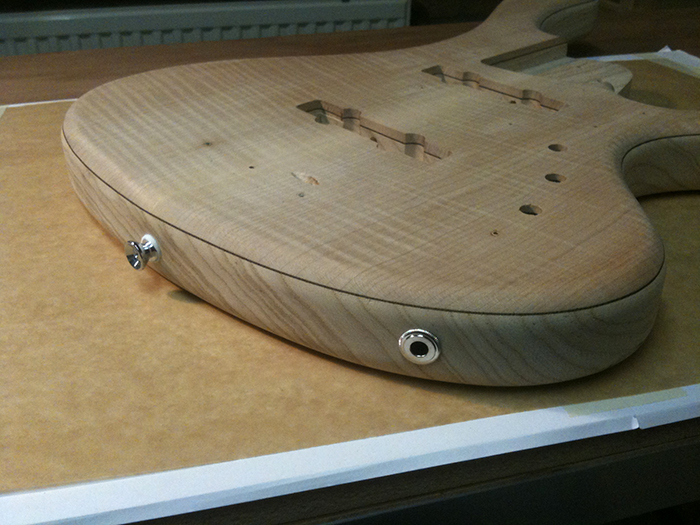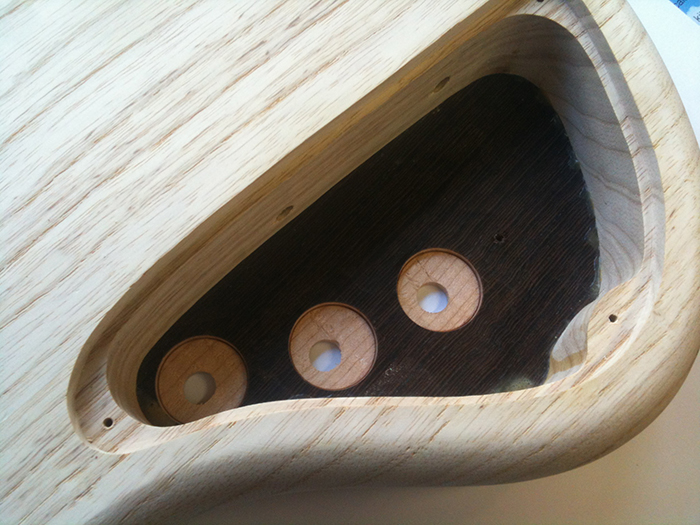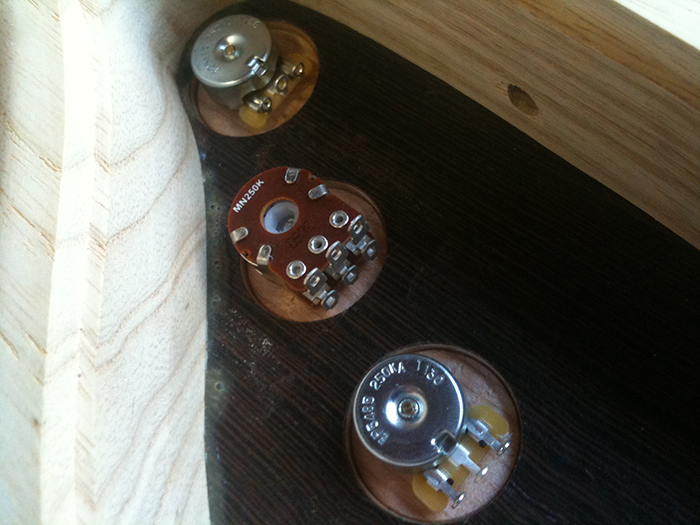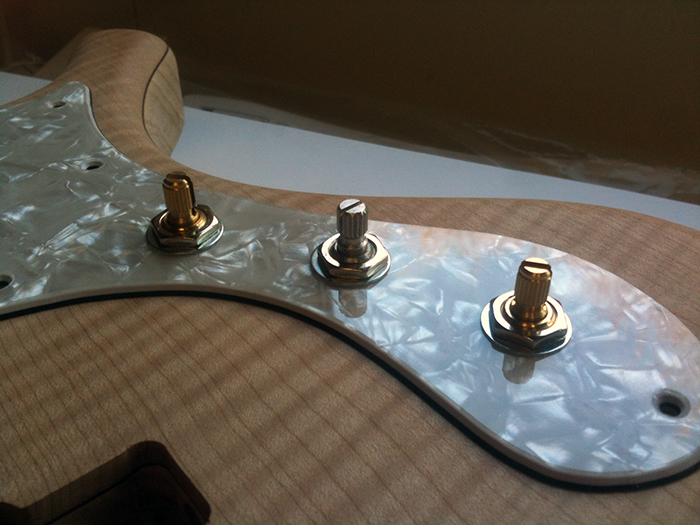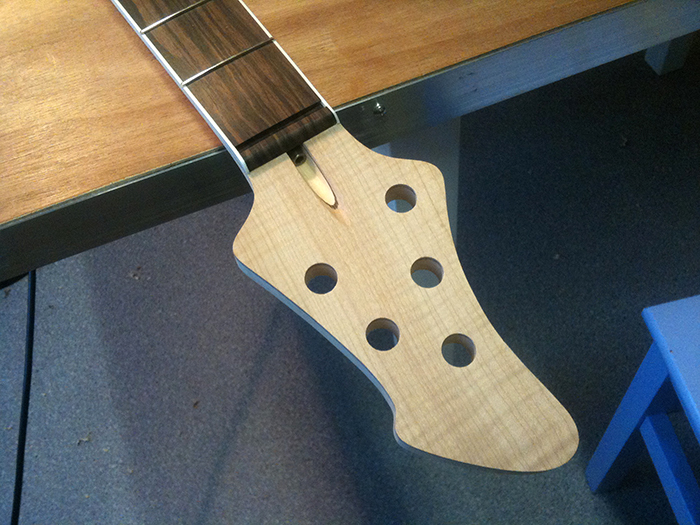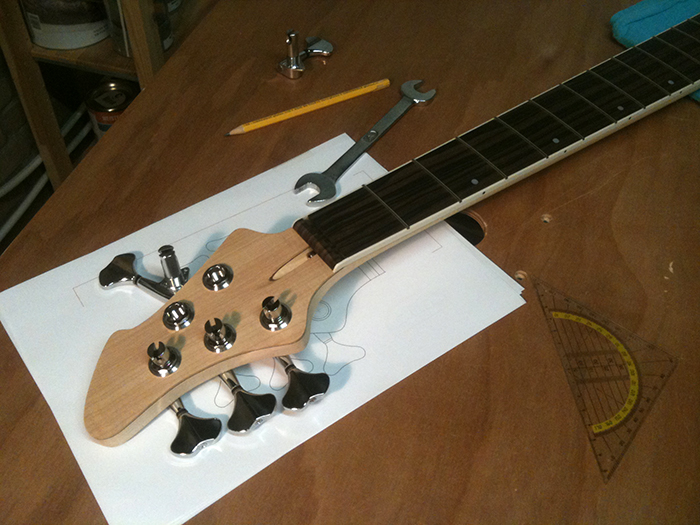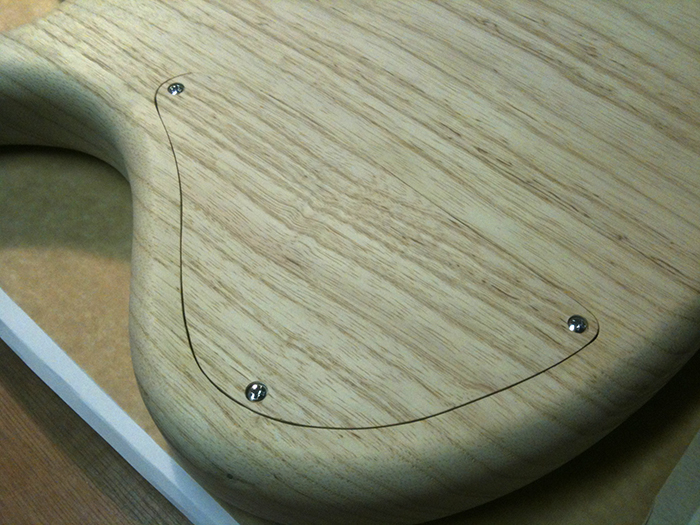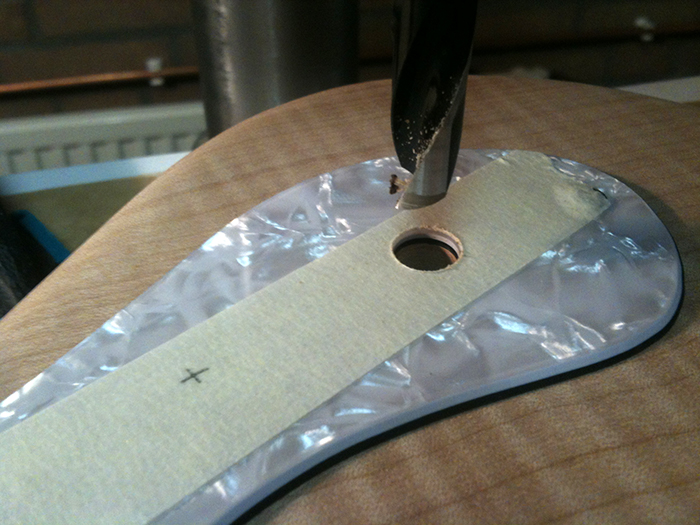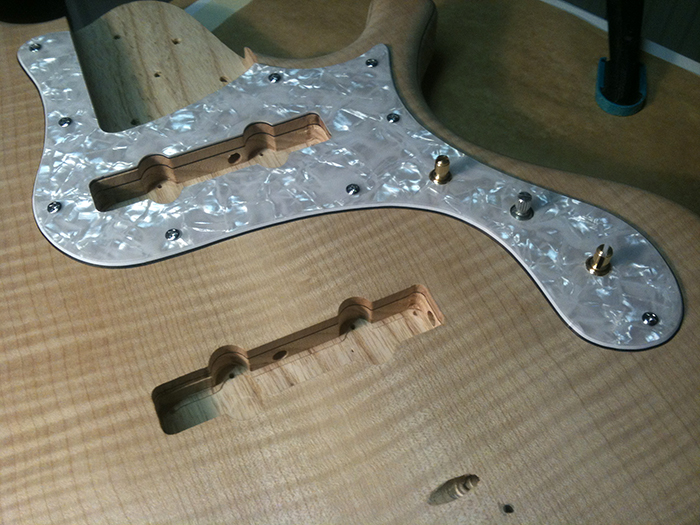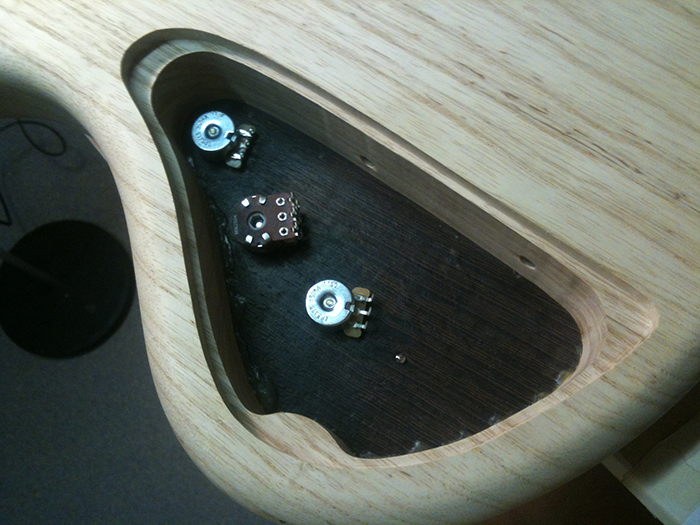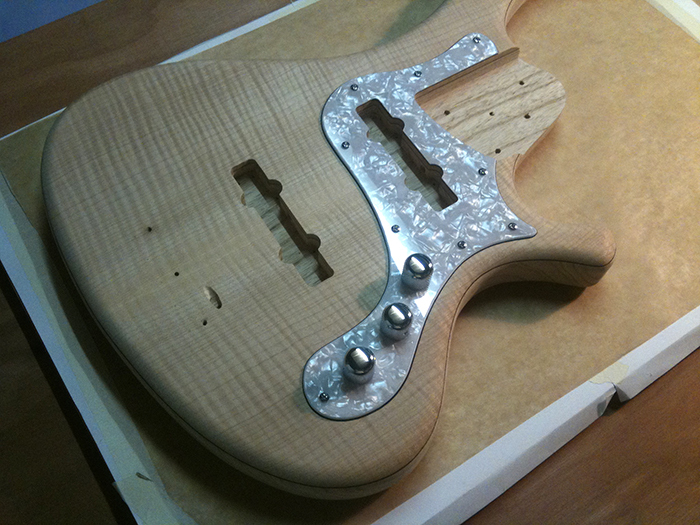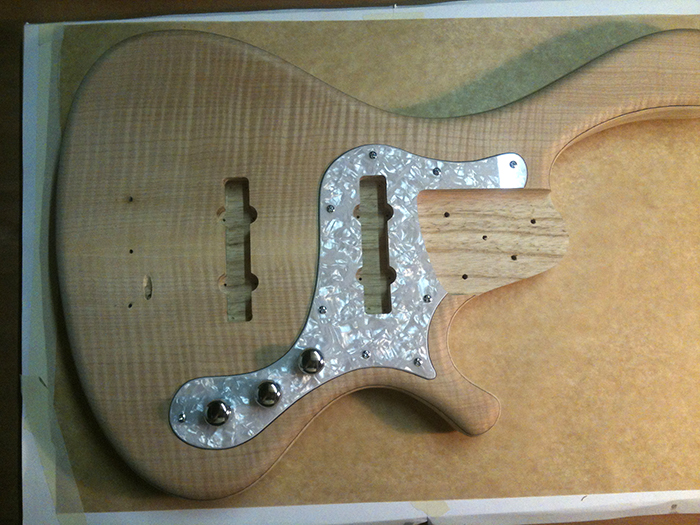I am still in doubt whether I will stain the bass or not. As I look at my test pieces now, I notice a few problems:
- The black stain didn’t dry well enough and mixed with the red too much, creating a purple tint in some places. I need to wait longer between the multiple layers and put a lot of effort into sanding back evenly to get an even red tint.
- Due to being a test piece, I dind’t clean the bench well enough after sanding, so when applying the red stain, little dots of black stained dust hit my workpiece again.. but this is an easy one to improve.
- The stain is sucked up by the end grain much more (logically, because this is what creates the enhanced figure in the wood), so I either need to sand back better (more) on the sides, or I will have to seal the sides first with sanding sealer and then sand back a little before I apply the stain. This seems hard to me.
- I did not put enough effort into applying the stain (multiple passes, rotating the cloth, really getting it in there), so in some spots you can clearly see some natural wood through the stain (deep into the Swamp Ash grain). Also not hard to improve.
- I need to seal the headstock sides with sanding sealer first, to get a perfect line between the headstock top (stained) and sides (natural). This is the step that intimidates me the most of the whole process and to me seems the highest risk to ruin the build.
- I am not sure yet how my oil will react on the stain, so I will have to test that too once my staining technique is under control.
Also, I’m a little stuck with the logo. If I am going for the red, I need a decal with white letters, otherwise it needs to be black. Inlaying a symbol is still possible, and the preferred technique, but I’d rather have my full name on it…
Just sharing my thoughts, so no progress furthermore. I really want to finish it up, so it kinda bugs me I cannot make up my mind. I hope another test piece will make the decision easier, putting aside the logo quest.

